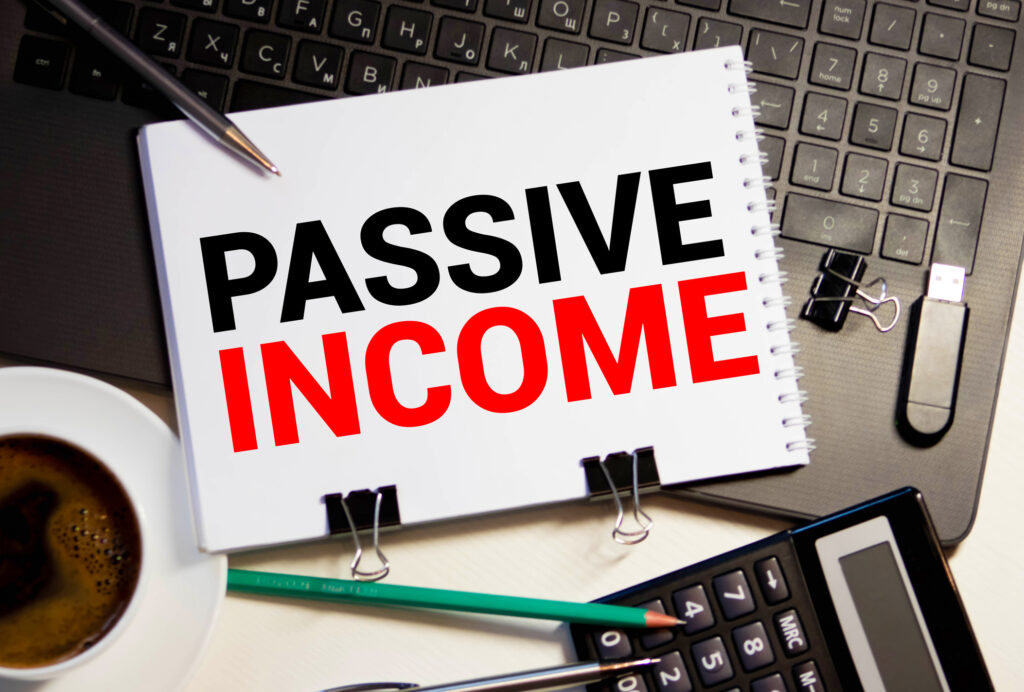
There’s a hack to retirement that you may not know about: passive income strategy. The usual tried and true plan for retirement, where you save money in a tax-advantaged account and claim Social Security, is a great backbone for your plan. But people often don’t think about what passive income can do for their savings.
So, what is passive income? Passive income tends to come from investments that provide regular payouts. Here are some options for passive income that you may not know about:
- Dividends: Dividends are some of the more commonly known forms of passive income. Certain stocks will pay out dividends to their investors after certain periods of time–the timing of the payments vary stock to stock. The downside of this form of passive income is that dividend stocks often see less growth, given they are paying shareholders and not fully investing in the growth of their business.[1]
- Bonds: Bonds can be a valuable source of passive income in retirement due to their relatively predictable returns and lower risk compared to stocks. Bonds typically pay interest semi-annually, providing retirees with regular income without having to actively manage their investments. Additionally, bond prices tend to be less volatile than stocks—even dividend-paying ones—offering retirees a more stable source of income. This can be particularly appealing for those seeking to supplement their retirement income.[2]
- Annuities: Annuities can provide passive income in retirement by offering a guaranteed stream of payments over a specified period or for the rest of the annuitant’s life. This can provide retirees with a sense of financial security, knowing they have a steady income to support their living expenses. Annuities can be structured to provide fixed or variable payments, allowing retirees to choose an option that best suits their needs. While there are various types of annuities with different features, benefits, fees, costs, and liquidity, they all share the common goal of providing a reliable source of passive income in retirement.[3] It’s important that you understand the costs and benefits of the specific annuity presented to you before making a decision, as these can be complex products.
- Real Estate and Rental Properties: Rental properties are also among the more common forms of passive income. They are useful because they are often consistent, but they do come with the burden of managing and maintaining the properties that are generating income for you.[4] In addition, if you own your home and have equity in it, there may be financial options to turn that equity into income. But consider these options with a financial professional to see if they really make sense for you before jumping in.[5]
One of the major upsides of passive income is that it may allow you to delay your Social Security payments and can be a cornerstone of your Social Security strategy. By organizing a lifetime income strategy that pays you consistently, you may be able to give yourself a financial buffer that allows you to wait on Social Security and build up your payouts.
If you think passive income strategies might be a good idea for your financial life, consider reaching out to one of our professionals today. You may have tried online retirement income planning tools or retirement calculators before. But the benefit of a financial professional is that they can provide you with specific advice that relates to your exact situation. They don’t just consider the numbers that you give them, they consider your life, your finances, and your dreams.
[1] https://smartasset.com/investing/how-to-invest-in-dividend-stocks
[2] https://www.bankrate.com/investing/best-passive-income-investing/
[3] https://www.bankrate.com/retirement/pros-and-cons-of-annuities/
[4] https://smartasset.com/retirement/passive-income-for-retirement
[5] https://www.morganstanley.com/articles/using-home-equity-in-retirement










